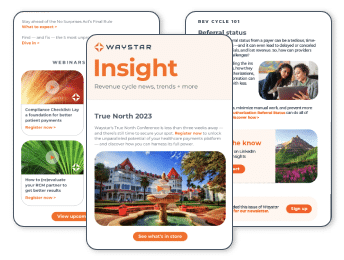A version of this blog was originally published in April of 2020. We updated the content to reflect the latest in the healthcare landscape.
According to a recent study, the global healthcare analytics market was valued at $25.9B in 2019, and is expected to grow at a rate of 7.5% from 2020 to 2027. As a result, 93% of hospital and physician financial executives believe exploring new ways to use data analytics is critical to the demands of value-based reimbursement and healthcare consumerism.
Yet 80% of hospitals and medical providers only use analytics in a limited or minimal way (regardless of whether they have the correct tools), and 65% of hospital systems with an analytics solution haven’t used it in the past 12 months due to a lack of strategic direction, resources, or training. In fact, only 15% report any sort of meaningful use in financial forecasting and strategic planning.
Every healthcare organization, no matter the size or specialty, has a wealth of data that can help guide decision-making when properly analyzed, but many simply do not have the right tools to provide useful results. Below are a few tips that can help you get more out of your data experience.
1. Implement the analytics solution that fits your organization’s needs
Analytics can help measure your entire revenue cycle performance, but you need to be sure the platform you use is the right fit for your workflows and data needs.
For example, do you need something you can turn on right away with built-in KPIs? Or do you need a custom solution with advanced business intelligence tools that will give you greater insights and true business intelligence?
Your analytics platform is going to look different depending on how you choose to use it, but across the board, one thing is certain: an analytics tool that doesn’t get used, either because it is too complex or unable to scale, is worthless.
2. Choose a tool that offers good data visualization
Serving as a window into rev cycle insights, well-visualized dashboards, and reports are a core piece of any analytics solution worth its salt. No one has the time to sort through every single result and resource to pull out actionable insights. Visually appealing, dynamic dashboards and reports with intuitive capabilities are crucial for informed, strategic decision-making.
3. Get insights across the revenue cycle with a tool that scales
One of the major challenges with many analytics tools is data that’s been siloed in individual reports pulled by team members focused on different parts of the rev cycle. Without an easy way to share and compare that information, no one is getting the full picture. The analytics solutions that bring the most value offer all the data you need in one place, with tools that easily scale across your organization.
4. Use benchmarking for competitive analysis
Benchmarking is crucial to understanding how your organization is performing in comparison to peers in the industry, offering valuable insight into your performance by providing a baseline for process efficiency and efficacy standards. Comparative analysis like this is a vital tool for improving critical areas of your rev cycle such as claim, payment, denial, and remittence performance.
The wrap up
Many revenue cycle leaders and teams lack access and insight into their rev cycle data, regardless of whether they have analytics tools in place. But with the right additions to your tech stack, you can fully harness the power of your data to empower faster, more actionable decision-making.
Learn more about Waystar’s Analytics + Reporting suite.


